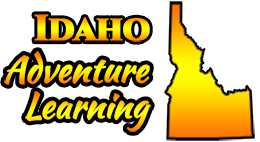How does our water management affect our watershed and the availability of water?
Submitted by Stephanie Chamberlin on Tue, 2017-07-11 00:00
The management of our watershed is critical to availability of water and to the basic quality of our lives. I had no clue as to the complexity of getting water out to farmers cities, towns and just everyone. I did not realize just how many stake holders their are involved in the process of deciding how much to hold back, how much to let out and how much to release. It was amazing to find how many agencies and people are involved in making these decisions. The Bureau of Reclamation, Army Corp of Engineers and the Boise Project Board of Control, all have a say in what happens. Usually the BOR takes main control of release of waters but due to the high volume of water and the threat of floods this year the ACE took control as they are in charge of flood control.
I think this can be brought home to students that collaboration is essential when dealing with something as complex and/or important to so many on so many levels is at stake. It would be a good project to have the students trace and research the different entities that have a role in water management and then choose which role they would like to represent. Then create a scenario in which they have to research current conditions, and work together to come up with a plan. I don't know I would have to play with this idea a little more, perhaps build a model? Not sure
So what do you think? How could this be used to teach students not only about the importance of water management, but also in working collaboratively on a complex problem with several stake holders?

Comments
Would you like to play a game.
I would like to think it would be possible to set up a game for my students to play demonstrating this involvement. This summer in a different class. I played a game involving resources for different countries and then trading it back and forth. Something similar with the different bureaus that control the Boise Watershed where the students took on the role of different agencies and had to negotiate back and forth in order to get all of the different resources spread around appropriately based on priorities that they had to set.
You could also throw in a random element. Say a die roll to determine the amount of water necessary that year. You could throw in ideas of cost what do farmers pay for irrigation how does that affect food costs.
Policy/decision making
I'm really liking this idea. What if there were an information sheet from a few of the different stockholder groups about their interests, priorities, or focuses. Perhaps put the information on past years' data that would contribute to making an idea. Divide the students all into these different groups to decide on a proposal. One represenative of each group would come up to the front of the room like a panel and have to present their proposal for the year or year span; perhaps like a city council. After each has a few minutes to represent then there could be debate or sharing of ideas between the group to try to come up with a proposal that would best suit all the needs of the stockholders. Those group members listening could be jotting down notes of other stockholders points and concerns. The respresentative can go back to their groups to rewrite and regroup their thoughts to come back to represent again. If there could be groups that feel similarly, they could perhaps combine ideas.
Hmm... maybe
Ideas for teaching
I love your ideas, making a game and throwing in random factors-like and extremely high water year! using dice to determine how much one entitiy might get, I also like the the idea of students creating a panel and presenting then bringing it back to thier groups to create a new plan. I also really like the idea of giving them a problem and then putting limits on the different groups. I can see so many possibilities for all kinds of lessons that can use these types strategies. I really appreciate all of your awesome ideas! You are Rock Stars!